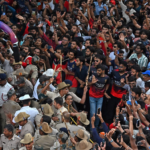
SpaceX’s Starlink is on the brink of launching its high-speed satellite internet in India. The company is set to receive the crucial Global Mobile Personal Communication by Satellite (GMPCS) license from India’s Department of Telecommunications (DoT) this month, after clearing all security checks.
This key license will allow Starlink to finally bring its services to Indian users, ending years of waiting.

Once Starlink has the GMPCS license, it will seek final approval from the Indian space regulator, In-SPACe, before it can start commercial operations.
The company’s application is almost complete, and the government will soon allocate the necessary satellite spectrum. According to officials, Starlink still needs about nine months to finish setting up local infrastructure, like gateways and a Network Operations Centre, before going live.
What does this mean for you?
If you’ve been dreaming of fast, reliable internet even in India’s remote corners, Starlink’s arrival is good news. Satellite internet could be a game changer where fiber cables don’t reach.
But patience is key—it won’t be instant. It’s like waiting for your favorite streaming service to launch in your country, except with satellites orbiting miles above!
Starlink plans to build three gateways across India to manage its network. The government has imposed strict security rules, including local command centers and lawful interception capabilities, ensuring the service complies with Indian regulations.
Meanwhile, Amazon’s Kuiper project is still stuck in the approval maze.
Even though Kuiper has launched some satellites globally and fulfilled all conditions, it awaits its letter of intent (LoI) from the DoT. Its application is delayed because the inter-ministerial committee hasn’t met since December 2024. Kuiper plans to build even more infrastructure in India, with 10 gateways, promising stiff competition once it gets the green light.
The Telco Take: Pricing Tensions Rise
India’s traditional telecom players aren’t thrilled. They argue that proposed satellite spectrum pricing is too low compared to their costly spectrum auctions.
The Cellular Operators Association of India (COAI), representing giants like Reliance Jio and Bharti Airtel, has urged the government to rethink the pricing model, warning it could hurt market fairness.
The DoT is currently reviewing recommendations from TRAI, which suggest a 4% adjusted gross revenue charge on satellite spectrum. Telcos say this is “non-transparent” and unfair, possibly violating new telecom laws. So while satellite internet inches closer, the pricing battle is heating up.
In short: Starlink is about to become India’s new satellite internet star. But the launch will take some more time as Starlink ticks all the regulatory boxes. Amazon Kuiper is still waiting in the wings, and Indian telcos are watching closely—ready to challenge the newcomers on pricing and fairness.
Also Read Elon Musk’s Starlink Is Coming to India — But The Price Might Shock You












